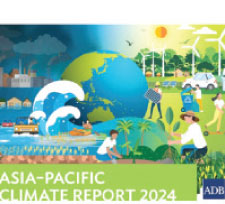 If climate change issues are not addressed, impacts, losses and costs of Climate Inaction may reach 41% of Asian regional GDP by the end of the century under a high end emissions scenario, stated the Asian Development Bank coordinated Asia-Pacific Climate Report 2024.
If climate change issues are not addressed, impacts, losses and costs of Climate Inaction may reach 41% of Asian regional GDP by the end of the century under a high end emissions scenario, stated the Asian Development Bank coordinated Asia-Pacific Climate Report 2024.
Climate change could lead to a 17% GDP drop across Asia and the Pacific region by 2070 under a high end emissions scenario, which could rise to 41% of GDP by the end of the century. The projected climate effects of sea level rise and labour productivity losses will be the most damaging – with lower-income economies and the region’s poorest set to be the hardest hit.
Mitigation must be increased to limit long-term losses, while adaptation must be accelerated to address impacts that will not be avoided. Annual investment needs for climate change adaptation by regional countries are estimated between $102 billion and $431 billion – far more than the approximate $34 billion of adaptation finance mobilised in the region in 2021-2022.
Private capital is increasingly helping to plug the climate finance gap, attracted by government regulations and recognition of climate risks, but barriers remain around policy uncertainty, unreliable information and weak markets.
Carbon pricing is critical to reducing emissions cost effectively. There is growing support for carbon pricing, including six national Emissions Trading Systems (ETS) being developed in the region, but its effectiveness is stymied by continued support for fossil fuel subsidies. It was also disclosed that the Developing Asia region generated about half of global Greenhouse Gases (GHG) emissions in 2021, driven by rising domestic consumption, energy demand and production.
Without stronger mitigation efforts, the region will experience more extreme heat, floods, storms, and infectious diseases. However, the region is well-positioned to benefit from the transition to net-zero due to its substantial renewable energy generation potential.
Sea level rise, combined with increased wave action and storm surges could destroy trillions of dollars of assets annually by 2070, while flooding damages hundreds of billions of dollars of assets annually. Climate-dependent sectors like agriculture, forestry, and fisheries will face diminished output due to increasing water stress. Hotter temperatures will reduce labour productivity, erode human and social capital, and increase mortality and health risks.








